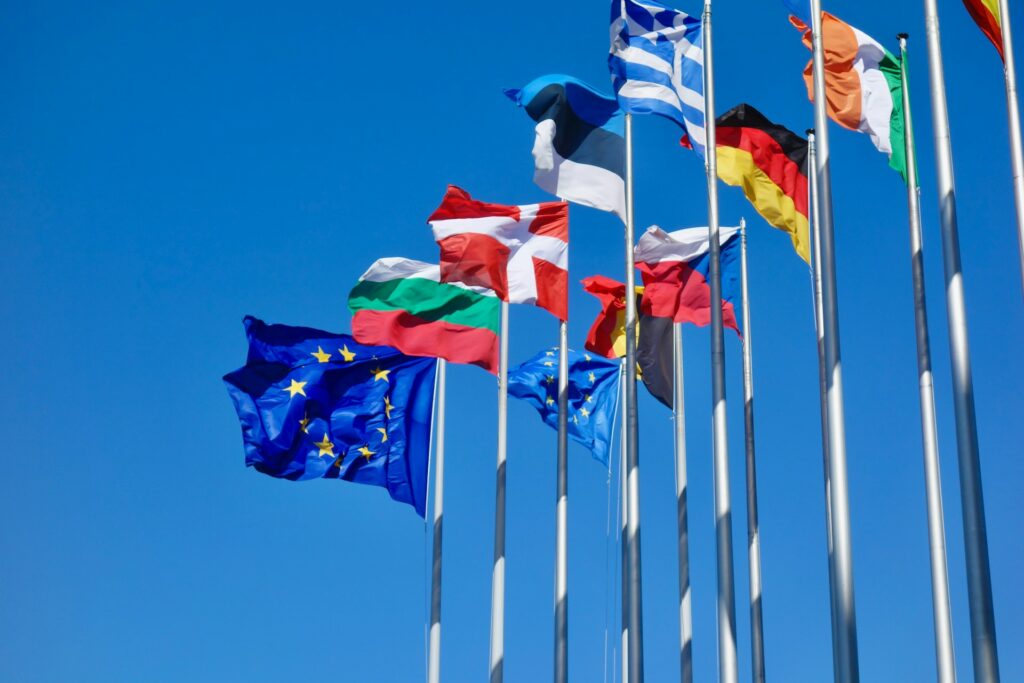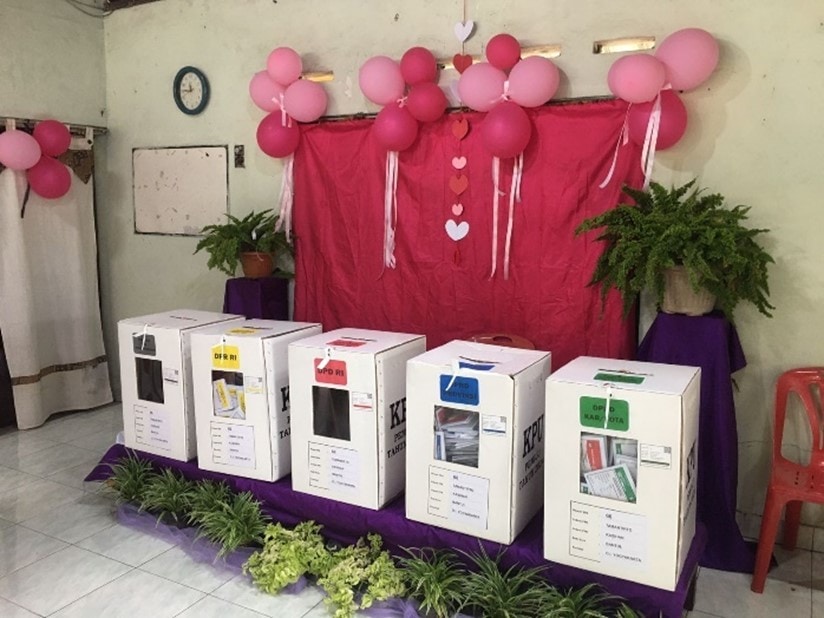The narratives about refugees in European Union maintain structural violence and social inequalities. They need to be dismantled to challenge oppressive practices in academia and border regimes.
The late Palestinian-American scholar Edward Said has argued in his book Culture and Imperialism “Just as none of us is beyond geography, none of us is completely free from the struggle over geography. That struggle is complex and interesting because it is not only about soldiers and cannons but also about ideas, about forms, about images and imaginings.”
Said’s work looks at the relation between imperial conquest, narratives and ideas justifying such relations of struggle over territories – imagined and material. The struggle about ideas, images of Europe’s Others continue to be relevant today, when it comes to which wars, occupations and genocides come to matter in relation to refugee narratives and policy in the European Union.
This struggle is essential to how Europe is constantly produced as a location based on who it is not. The dominant narratives part of this struggle often erase historical experiences of peoples dispossessed from wars in a broad sense, which has profoundly normative implications to justify violence and selectively exclusionary policies.
As Said argues, while there has been so much written and shown of the Palestinians, the narrative of their current actuality stemming from the stories of their existence in and from displacement from Palestine, later Israel, that narrative is absent. Narratives for Said are formed in various everyday forms like folk tales, novels, but also to the academic books and debates, and more importantly to laws, and legitimacy from political tools and authority.
In this article I introduce four dominant narratives in public discourse, that shape everyday encounters, including research encounters, and academic knowledge production on and about refugees. These narratives illustrate the negotiation that fixes Europe – or a European identity – in relation to its perceived Others, the “not us”.
These narratives are violent, because they are not built on historical experiences of the peoples experiencing displacement across geographies and across times. They maintain structural violence and social inequalities. They need to be dismantled.
In the following, I will outline the four narratives of the grateful refugee, the victim refugee, the successful refugee, and the transparent refugee.
The grateful refugee
The flags of Ukraine fly on top of many public buildings across European Union, and we see the selective embrace of Ukrainians. This embrace, however, might also have an expiry date, but also creates what Mirjam Wajsberg calls circulation of fatigue related to conditions of the wider field of migration control.
There is inevitably compassion fatigue by organisations supporting people fleeing wars, racial battle fatigue for those identified as not deserving of citizenship, research fatigue for researchers endlessly writing about violent conditions of exclusion without witnessing any structural transformation in conditions of people not granted asylum. We witness the unequal mobilisations towards specific bodies from Ukraine by public institutions, civil society, and initiatives alongside the denial of other wars, occupations and genocides across the world.
Nevertheless, the social expectations of gratefulness for receiving refugees and migrants is always present. This is apparent in everyday interactions as in public discourse. The grateful refugee is also “worthy” of our protection, which is not extended equally despite their universal claims.
The social expectations of gratefulness for receiving refugees and migrants is always present.
I have argued with colleagues in a previous research article, that the narrative of the grateful refugee fits into a wider European script of migrant integration in place. In 2015, we witnessed people living in camps across EU showing various expressions of gratitude toward their “hosts”.
Part of the power asymmetries embedded in these expressions of gratitude are problematic, as they force people to present gratitude – breaches of gratitude would sever ties with local populations and the bureaucratic system, making everyday life much harder. And as researchers Paola Bachetta, Fatima El-Tayeb and Jin Haritaworn point out, the longer one lives in Europe, the stronger this paradox of being grateful as an eternal migrant. The locals’ “need to help” can become contingent on the societal expectation of a grateful refugee.
This power dynamic centres on the helper: the humanitarian aid worker, the national citizen volunteer, the public institutions of the welcoming nation state, who become visible for their help. The helper is visible in such humanitarian and volunteer work and shadows the daily labour of migrant workers and precarious citizens. Such invisible care work of receiving and sharing lives fleeing wars continue silently, often precariously within camps, asylum centres, detention centres and between marginalised groups not yet citizens.
As the Martinican psychiatrist and political philosopher Frantz Fanon underlined, “Europe is literally the creation of the Third World.” From coffee to spices, and from cotton to the silks and exotic discoveries literally extracted by and from slave labour, coolies, soldiers during World War I and II, and now “migrant labour”, Europe continues to be built by its Others.
And yet, gratitude remains a dominant relation demanded from the very lands and labours feeding Europe. The famous slogan “We are here because you were there” refuses gratitude precisely based on this historical relation. It becomes important to attend to the colonial amnesia, and invisibility of the hands helping Europe, historically and till today, that is hidden in the name of gratitude demanded from refugees.
The Victim Refugee
Related to the narrative of grateful refugee is the victim refugee that is manufactured in all aspects of humanitarian border regimes. This is internalised through the images and representations of the “victim refugee”, that is long embedded in missionary work and colonial tropes of the subaltern Other.
Anthropologist Liisa Malkki’s book The Need to Help (2015) talks about Finnish Red Cross volunteers remaining in Finland, but participating in humanitarian support towards people in Africa as fundamentally driven by the “need to help,” which emerges from isolation and from the very domestically rooted identities of such volunteers.
Such a need to help is intimately intertwined with geographical imaginaries of distance and proximity, that continue to produce Others who are defined as being in need of Europe’s help. The victim narrative focuses on the images of people not as agents, but victims to their circumstances. As the anthropologist Shahram Khosravi mentions in his auto-ethnography of an illegal traveller, that he was abnormalized and not seen as a ‘healthy’ and ‘normal’ individual, but rather treated like a child, as soon as he became the ‘client’ of refugee support upon entering the camp.
To receive the power and agency of lives navigating war and conditions of exile requires a radical transformation of such structural conditions and institutions. Poet-scholar Saba Hamzah brings attention to waves from the condition of being stranded. She calls for attending to the dynamic of moving despite the direction or strength of the waves, waves being the harsh conditions not only of warzones but also structural conditions of discrimination that follow.
The victim narrative focuses on the images of people not as agents, but victims to their circumstances.
Hamzah offers a vision of being stranded, that rejects any associations of being stuck, but a movement despite the power of the direction, and strength of the waves one is navigating. The victim narrative has always been, and continues to be, challenged in knowledge production and in everyday encounters within asylum systems.
The right to rewrite histories becomes all the more urgent to the question of who is writing whose stories, what stories fit the dominant narratives, why and how, when we think of the migration academic industrial complex. Huge grants and funding machineries feed this complex without questioning the intimate relations sustaining unequal practices of knowledge production in academia.
Universities continue to send students and researchers to do fieldwork and collect stories about refugees, but the ethical questions remain unaddressed in terms of the practices of theory building reproducing inequalities. How are stories collected? Who claims which stories to build what theories? How do these theories or concepts transform not only the lives of those being studied, but also to keep dominant narratives in place feeding inequalities? What about people having the right to rewrite histories based on historical and lived experiences from conditions of exile?
Often questions of ethics are turned into consent forms and bureaucratic procedures giving more administrative work, but also privilege to the researcher to use it to one’s own advantage than to the researched. These are urgent questions to name the violence of the structural hierarchies embedded not only in asylum systems, but also in universities in order to develop tools to dismantle such modes of representation.
The successful refugee
The narrative of the successful refugee is connected to the politics of time. On one hand, asylum regimes steal time from applicants by keeping them endlessly waiting, as Khosravi has pointed out. On the other hand, there is a push towards fast-tracking people to integrate quickly into receiving societies.
The refugee who learns the language, finds a job limited to what the asylum system determined suitable for them – often disconnected from one’s professional and educational qualifications – is “rewarded” to have the traits of a successful, model refugee. The successful refugee adapts.
Again, the person becomes less of a person, but more of a label, or even a stereotype. They become a homogenizing goal, and a success story to report that the system works!
The question remains whose bodies are feeding whose minds to produce knowledge on Europe’s stories and histories today and theories of displacement.
Universities continue to steal time from people waiting for their legal permits in using them for research very often in the form of extracting stories. Students and researchers continuously depend on “refugee stories” to legitimise their theories.
The question remains, how telling one’s story of flight to a researcher, or journalist, or artist keeps in place or transforms structural conditions of racism one faces in daily life, such as access to education, language, jobs based on one’s qualifications and interests and so on. As academics continue to fast track their careers based on publications about refugees and Europe’s violent border regimes, the time and therefore the lives of people continue to be stolen, or put in one arm’s length for such knowledges to be produced.
While the recent welcoming of certain Ukrainian refugees into research positions and education programs showed us the possibilities to open classrooms and research positions to people fleeing wars, it also showed us how little political will existed to open up the university to the lives and people fleeing other warzone areas. The question remains whose bodies are feeding whose minds to produce knowledge on Europe’s stories and histories today, and theories of displacement. Opening up universities with critical learners and scholars, whose experiences of migration, exile and displacement are as rich as the criticality of their thinking, becomes urgent to begin to break this separation.
The transparent refugee
In her book Toward a Global Idea of Race, philosopher Denise Ferreira da Silva traces how philosophical and scientific discourses have simultaneously described and instituted the modern subject as “transparent I” – Man, the subject of post-enlightenment European thought. The rational being who is self-determined and different to bodies produced as non-European.
Modern citizens enjoying freedom, security and justice are most importantly, through this lens, those enacting a ‘transparent I’. However, in the process of becoming citizens, transparency is demanded. A refugee has no right to opacity, of not being made fully visible in the process. Asylum-seekers in or arriving to the EU have to produce a “transparent I” in terms of owning their story of flight, and producing it as one shaped by individual self-determination. And, even when they do, they may not be believed, producing them as affectable to the exclusionary policies.
In the process of becoming citizens, transparency is demanded. A refugee has no right to opacity, of not being made fully visible, in the process.
A refugee according to the 1951 Refugee Convention of United Nations High Commissioner for Refugees (UNHCR) – is someone fleeing her or his country, because of individual persecution rather than widespread violence. Transparency is used as a narrative of security measure against supposedly fraudulent applicants, while the decisions for rejection or acceptance of the asylum application itself is an opaque bureaucratic process with convoluted loops of tenuous accountability.
On the other hand, transparency also shapes everyday acts of citizenship, where one is continuously asked – interrogated – about their reasons for fleeing. The business of anthropology or social sciences at large on displacement, also reinforces the European border regime by making border-crossers into objects of study, by demanding transparency.
The narratives of transparency are reproduced not only by state-actors but also in acts of (citizen) hospitality and academic practices towards people seeking life within restricted legal pathways. Investigation and scrutiny, bureaucratic or academic, are the norm. The transparent refugee is an object to the point of being or becoming absent.
Call for questioning Europe’s refugee narratives
Coming back to Said’s call mentioned in the beginning, we need to see these above narratives as struggles over ideas, forms, images, that continue to legitimise violence inside and outside EU. Most importantly, it is a call for constantly questioning the narratives and the very terms and vocabularies in which we discuss such topics of migration, borders, displacement, that hide relations of extraction, dispossession, silencing central to the making of Europe.
And most importantly, one has to question who is allowed to narrate whose story, on whose terms, why and at the cost of whose knowledges being erased. This is the constant power struggle Said talks about, as much in academia as in other spaces.
Kolar Aparna is a postdoctoral researcher at the University of Helsinki, Faculty of Arts, Academy of Finland Centre of Excellence in Law, Identity and European Narratives. In the last decade, she has been teaching on themes related to postcolonial Europe. Her work is focused on building situated knowledges as part of epistemic struggles around citizenship, movement, and borders.
Article is part of Eurostorie-article series.
Eurostorie articles in Finnish.
Eurostorie artiklar på svenska.
Article image: Phil Botha / Unsplash





